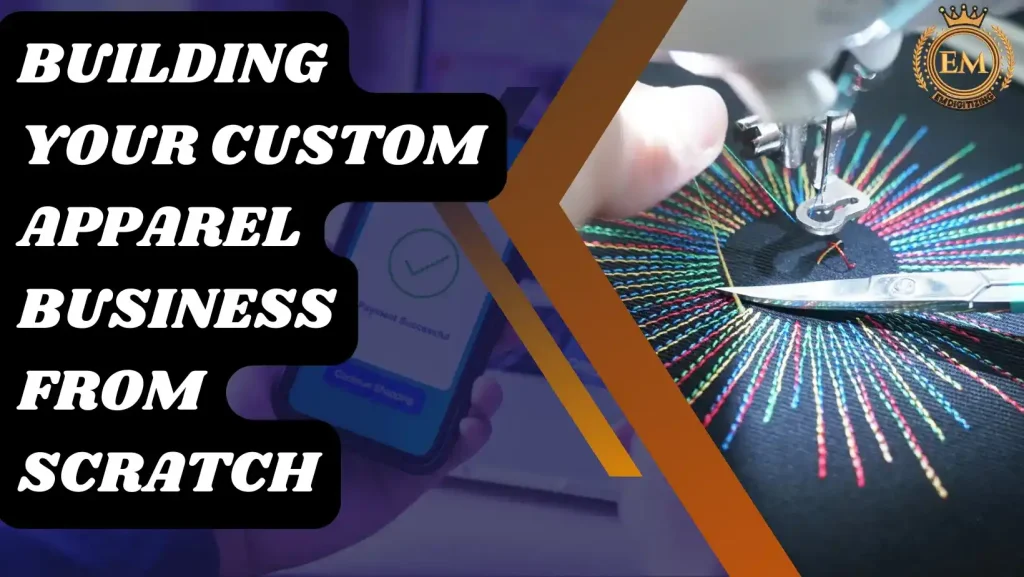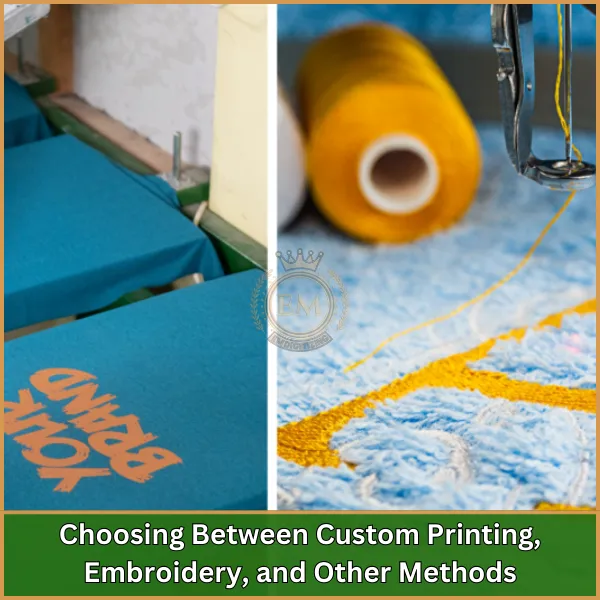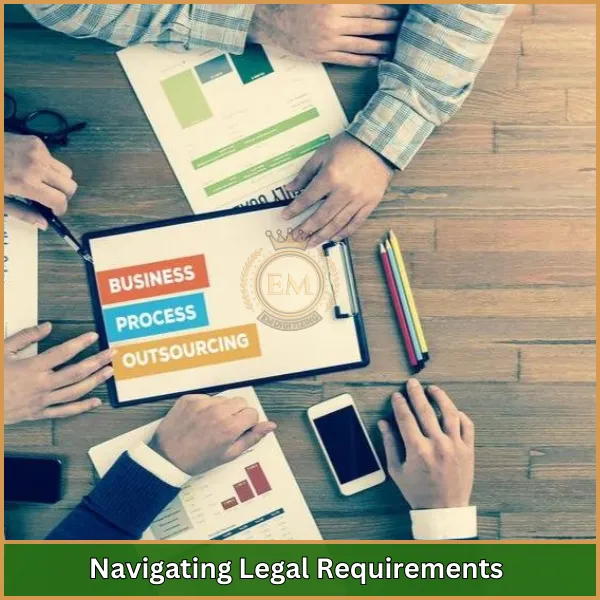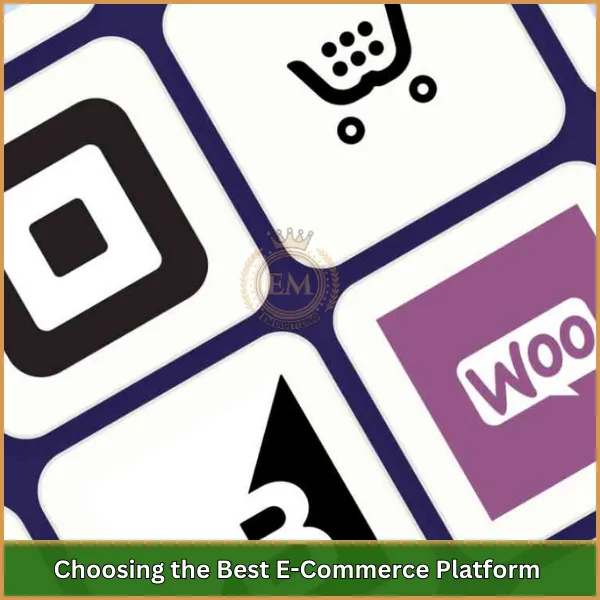If you’ve ever dreamed of starting your own business and have a passion for fashion, launching a custom apparel business could be your perfect opportunity. From creating personalized designs to building a brand that resonates with your customers, the possibilities are endless.
However, turning your vision into a successful business takes more than just creativity—it requires planning, research, and strategic growth.

In this guide, we’ll explore the essential steps to help you get your custom apparel for business off the ground, attract the right customers, and scale your brand for long-term success.
Building Your Custom Apparel Business from Scratch
1. Identifying Your Niche and Target Market
Identifying your niche and target market is one of the most important steps in starting a custom apparel business. Your niche will help you focus on specific products while understanding your target market ensures that your designs meet customer needs.
Choosing Between Custom Printing, Embroidery, and Other Methods

When starting your business, you’ll need to decide what kind of custom apparel you want to produce.
Custom printing, like screen printing, is popular for t-shirts, while embroidery is great for best custom business apparel such as hats and jackets.
Each method has its own advantages, so choose the one that fits your skills and appeals to your audience.
Understanding Your Target Market and Customer Preferences
Your target market is the group of people most likely to buy your custom embroidered business apparel. Are they young adults looking for trendy t-shirts, or corporate clients wanting embroidered uniforms?
Understanding their preferences helps you design products that will sell. You should research their age, lifestyle, and buying habits to create products that appeal to them.
Competitor Analysis: Finding Your Unique Selling Point
It’s also important to research other custom apparel businesses in your niche. Look at what your competitors are offering, their pricing, and their marketing strategies.
This helps you find ways to make your business stand out. Whether it’s through better designs, lower prices, or exceptional customer service, your unique selling point will set you apart from the competition.
2. Business Plan and Legal Setup
A well-structured business plan and an understanding of legal requirements are key to running a smooth operation. Your business plan will guide your decisions and keep you on track while staying legally compliant protects your business.
Crafting a Detailed Business Plan

A business plan is your roadmap to success. It should outline your goals, target market, product offerings, and financial projections.
Include your budget, expected income, and expenses, and be clear about how you will market and sell your products.
Having a strong plan will help you make better decisions and avoid unnecessary risks as you grow your business.
Navigating Legal Requirements

Before you launch, make sure you understand and follow all legal requirements for your business.
This could include registering your custom apparel business obtaining licenses, and paying taxes. Different areas have different laws.
So it’s important to check the regulations where you’re operating.
Legal compliance will ensure that your small business custom apparel brand runs smoothly without legal obstacles.
3. Design and Product Development
Your designs are the core of your custom apparel business. This is where your creativity comes into play, and producing high-quality products is crucial for your business’s reputation.
Creating Unique and Marketable Designs
Your designs should be fresh, creative, and tailored to your audience. Stay on top of fashion trends while keeping your own style unique. If your target market loves vibrant, trendy designs, focus on that.
If they prefer something more classic or simple, adjust accordingly. Designs that resonate with your customers will set your business apart.
Prototype Development

Before launching full production, create prototypes of your designs.
Prototypes allow you to see how the final product will look and feel, and give you a chance to make adjustments before producing in bulk.
This helps prevent costly mistakes and ensures that your products meet your quality standards.
Ensuring Consistent Quality with Quality Control Processes
Quality control is essential for maintaining a strong brand reputation. Whether you’re producing the apparel yourself or outsourcing to a manufacturer, make sure that every product meets high standards.
Set up processes to check for defects and ensure that the final product is durable, well-made, and exactly what you promised customers.
4. Sourcing Materials and Optimizing Manufacturing
To create high-quality products, you’ll need to source the best materials and ensure your manufacturing process is efficient and cost-effective.
Finding Reliable Suppliers for Materials
Reliable suppliers are key to success in your custom business. Look for suppliers who offer high-quality fabrics and materials for the best custom business apparel at competitive prices.
Building strong relationships with these suppliers ensures that you always have the materials you need to meet demand and maintain quality.
Streamlining Your Manufacturing Process for Efficiency

As your custom apparel business grows, you’ll want to optimize your manufacturing process to save time and reduce costs.
Look for ways to automate certain tasks or improve workflows so that you can produce items faster without sacrificing quality.
Efficient manufacturing allows you to meet customer demand while keeping expenses low.
Cost Management and Maintaining Product Quality
It’s important to manage your production costs while maintaining product quality. Track your expenses carefully, negotiate better deals with suppliers, and look for ways to cut costs without lowering the quality of your products.
This could include using more efficient equipment or finding less expensive shipping options.
5. Setting Up and Optimizing Your E-Commerce Platform
An online store is essential for reaching customers and selling your products. Setting up a strong e-commerce platform will help you showcase your products and make it easy for customers to buy from you.
Choosing the Best E-Commerce Platform

There are many e-commerce platforms available, including Shopify, WooCommerce, and Etsy.
Each one offers different features, so choose the one that best fits your business’s needs and budget.
You’ll want a platform that makes it easy to list your products, manage orders, and accept payments securely.
Designing a User-Friendly Website
Your website should be simple to navigate and reflect your brand’s personality. Use high-quality images to showcase your products, and make sure the checkout process is quick and easy.
A user-friendly website helps customers find what they’re looking for and makes them more likely to complete a purchase.
Securing Payment Processing and Building Customer Trust

Customers need to feel safe when buying from your online store. Use secure payment gateways like PayPal or Stripe, and make sure your website has SSL encryption to protect their personal information. Building trust with your customers will encourage repeat business.
6. Marketing and Branding Your Business
Marketing and branding are key to attracting customers and building a loyal customer base. Your brand identity should be strong and consistent, and your marketing strategies should engage your audience.
Developing a Strong Brand Identity
Your brand is more than just your logo—it’s the personality of your custom apparel business. Think about what makes your business unique, whether it’s your product quality, customer service, or eco-friendly approach.
Develop a brand identity that reflects your values and appeals to your target audience.
Launching Effective Digital Marketing Campaigns
Digital marketing is one of the best ways to reach your audience. Use targeted ads on Facebook, Instagram, and Google to promote your products. You can also build email marketing campaigns to keep customers informed about new products, discounts, and special offers.
Growing Your Brand with Social Media Engagement
Social media is a powerful tool for connecting with your customers. Post regularly on platforms like Instagram, Facebook, and TikTok, and engage with your followers by responding to comments and messages.
Run contests or giveaways to attract new customers and build a community around your brand.
7. Managing Orders, Inventory, and Customer Relationships
Managing orders, inventory, and customer relationships effectively is key to keeping your custom apparel for business running smoothly.
Order Fulfillment: From Purchase to Delivery

Once a customer places an order, make sure it is processed quickly and shipped on time.
Choose reliable shipping partners to ensure your products arrive safely and on schedule.
Keeping customers updated on their order status helps build trust and satisfaction.
Implementing Robust Inventory Management Systems
Keeping track of your inventory is essential for avoiding stock shortages or over-ordering. Use inventory management software to track what you have in stock, forecast demand, and reorder products before they run out.
This keeps your business running smoothly and helps you meet customer demand.
Building Customer Relationships through Personalized Service
Personalized customer service is a great way to build loyalty. Use tools like customer relationship management (CRM) systems to track customer preferences and history. Send personalized emails or discounts to repeat customers to make them feel valued.
8. Customer Support and Feedback Integration
Excellent customer service and listening to feedback are key to keeping customers happy and improving your custom apparel business.
Providing Outstanding Customer Service
Respond to customer inquiries quickly and politely. If there’s a problem with an order, work to fix it immediately. Great customer service makes your customers feel valued and more likely to buy from you again.
Collecting and Acting on Customer Feedback
Ask your customers for feedback on their experience with your products and services. Use surveys, reviews, or social media polls to gather their opinions. Listen to both positive and negative feedback to improve your business.
Creating Loyalty Programs to Retain Customers
Loyalty programs are a great way to reward repeat customers. Offer discounts, exclusive access to new collections, or free shipping to your loyal customers. These perks will encourage them to keep coming back.
9. Scaling and Growing Your Business
As your business becomes more successful, look for ways to grow and expand your operations.
Exploring Expansion Opportunities
There are many ways to expand your business. You could start offering new products, open a physical store, or partner with other businesses to reach new customers. Always look for growth opportunities that align with your brand.
Hiring and Staffing: Growing Your Team

As your business grows, you may need to hire more staff to handle production, marketing, and customer service.
Look for employees who share your passion for the business and can help take it to the next level.
Revisiting and Updating Your Business Plan
Your business plan should grow with your business. As you expand, revisit and update your plan to reflect new goals, challenges, and opportunities. A flexible plan will help you adapt to changes in the market and continue growing.
Start Your Custom Apparel Journey with EMdigitizing by Your Side
Starting a custom apparel business is an exciting adventure, and whether you’re leaning toward embroidery or printing, you don’t have to do it alone.
At EMdigitizing, we’re here to make things easier for you. We know that managing a small business can be challenging, especially with tight budgets and growing demands, but that’s where we come in.
With our affordable and reliable embroidery digitizing and vector art services, we’ll help bring your designs to life quickly and with top-notch quality.
We’re committed to delivering the best results so you can focus on growing your brand. And to help you get started, we’re offering a 50% discount for first-time customers!
So why wait? Let EMdigitizing support your business with expert design services—because we’re as passionate about your success as you are.
Order today and watch your vision come to life!
FAQs
To start a custom merch business, research your target market, choose a niche, select a print-on-demand service or production method, and set up an online store.
Selling custom shirts can be profitable with effective branding, marketing, and a unique design approach, especially when utilizing print-on-demand services to minimize upfront costs.
The profit margin on t-shirts can vary widely, typically ranging from 50% to 100%, depending on production costs, pricing strategy, and sales channels.
To sell merch legally, obtain the necessary business licenses, and if you’re using copyrighted material, secure permissions or licenses from the copyright holders.
